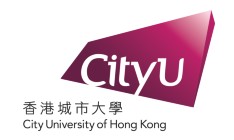
Testing the function of solar cells in a glove box.Credit: City University of Hong Kong
Materials science is behind some of the most important technologies that underpin key industries such as energy, electronics and manufacturing. City University of Hong Kong (CityU) has established the first department in Hong Kong devoted to materials science as part of its vision to promote the improvement of materials in the city and beyond, to create a better world by solving global challenges.
Converting greenhouse gas to fuel
Scientists are searching for creative ways to convert undesirable compounds into useful ones. One example of these efforts is a new photocatalyst developed by a team of international researchers led by Yun-hau Ng, associate professor in the School of Energy and Environment, as reported recently in Angewandte Chemie International Edition. The photocatalyst can use sunlight to produce methane fuel (CH4) from carbon dioxide at roughly twice the normal rate. It will not only produce methane fuel more efficiently but will also help to reduce carbon dioxide levels, thereby contributing to combating global warming. With the ultimate goal of converting carbon dioxide emissions into green fuels, the team is continuing to work on boosting the production rate of methane and exploring ways to scale up the synthesis of both the catalyst and reactor systems.
Efficient light emission and energy supply
After developing a two-dimensional (2D) perovskite material for application in light-emitting diodes (LEDs), Andrey Rogach, chair professor at the Department of Materials Science and Engineering at CityU, and his team, in collaboration with the University of Shanghai, have created one of the most efficient and bright LEDs based on such materials, by developing a new way to increase both energy funnelling and light emission in 2D perovskites; the study was published in Nature Communications.
CityU scientists have also developed a novel method for realizing high-efficiency perovskite solar cells that boast enhanced stability and minimize lead leakage. This paves the way for real-life applications of perovskite photovoltaic technology. Published in Nature Nanotechnology, the study was co-led by Alex Jen Kwan-yue, chair professor of chemistry and materials science, as well as Zhengtao Xu and Zonglong Zhu from the Department of Chemistry.

Yang Lu has discovered how to modulate the electronic properties of diamond by elastically stretching microfabricated diamond structures.Credit: City University of Hong Kong
Diamond as the next-generation material for microelectronics
Renowned for its hardness, diamond has been widely applied in industrial processes such as cutting, drilling and grinding. It is also an extraordinary semiconductor because of its ultrahigh thermal conduction, exceptional charge carrier mobility, high breakdown strength and ultrawide band gap. However, compared with silicon, it has been challenging to dope diamond so that it can be used in electronic and optoelectronic applications. Thinking outside the box, a joint research team led by Yang Lu from CityU has discovered how to modulate its electronic properties by elastically stretching microfabricated diamond structures. This finding, which was published in Science, has demonstrated for the first time how a nanomechanical approach can realize ultralarge, uniform tensile elastic straining of diamond arrays. It has also shown the potential of ‘strained diamonds’ as promising candidates for advanced functional devices in microelectronics, photonics and quantum-information technologies.

Hua Zhang has found a general synthetic method for the large-scale preparation of emerging metastable 2D nanomaterials.Credit: City University of Hong Kong
Preparing pure metastable 2D nanomaterials
In a study recently published in Nature Materials, a joint research project led by Hua Zhang, Herman Hu Chair Professor of Nanomaterials in CityU, mainly in collaboration with Nanyang Technological University, Singapore, reports a general synthetic method for large-scale preparation of emerging metastable 2D transition metal dichalcogenides (TMDs).
Large, high-quality crystals are critical for studying the intrinsic physicochemical properties of nanomaterials. In particular, group-VIB TMDs with the 1T’ phase have been attracting attention in recent years for their superior performance in optoelectronics, catalysis, energy storage and superconductivity. But it has been highly challenging to prepare pure samples of these TMDs because their crystal phases are metastable.
Now, Zhang’s team has determined four crystal structures of these TMDs using single-crystal X-ray diffraction based on high-quality crystals — a discovery that is significant for materials scientists, crystallographers, physicists and chemists. This work greatly expands the scope of phase engineering of nanomaterials and paves the way for future exploration of phase-dependent physicochemical properties and applications of nanomaterials.
Fostering innovation
CityU’s vision is to enhance life through research. Its commitment to this vision is illustrated by the launching of the largest (HK$500 million) university-based entrepreneurship programme in Asia, namely HK Tech 300. Through this programme, CityU intends not only to nurture students’ entrepreneurship but also to promote knowledge transfer to make a significant and visible impact on society through outstanding research achievements.


